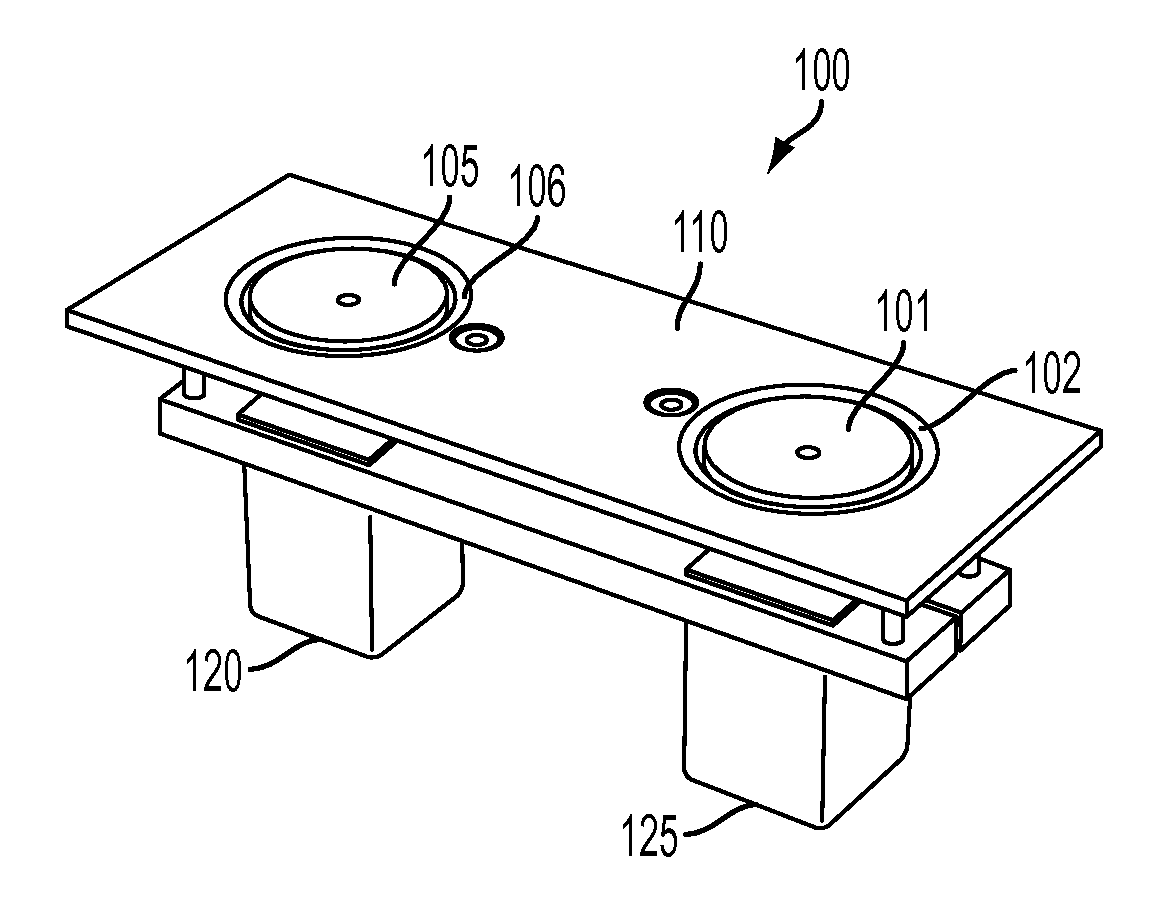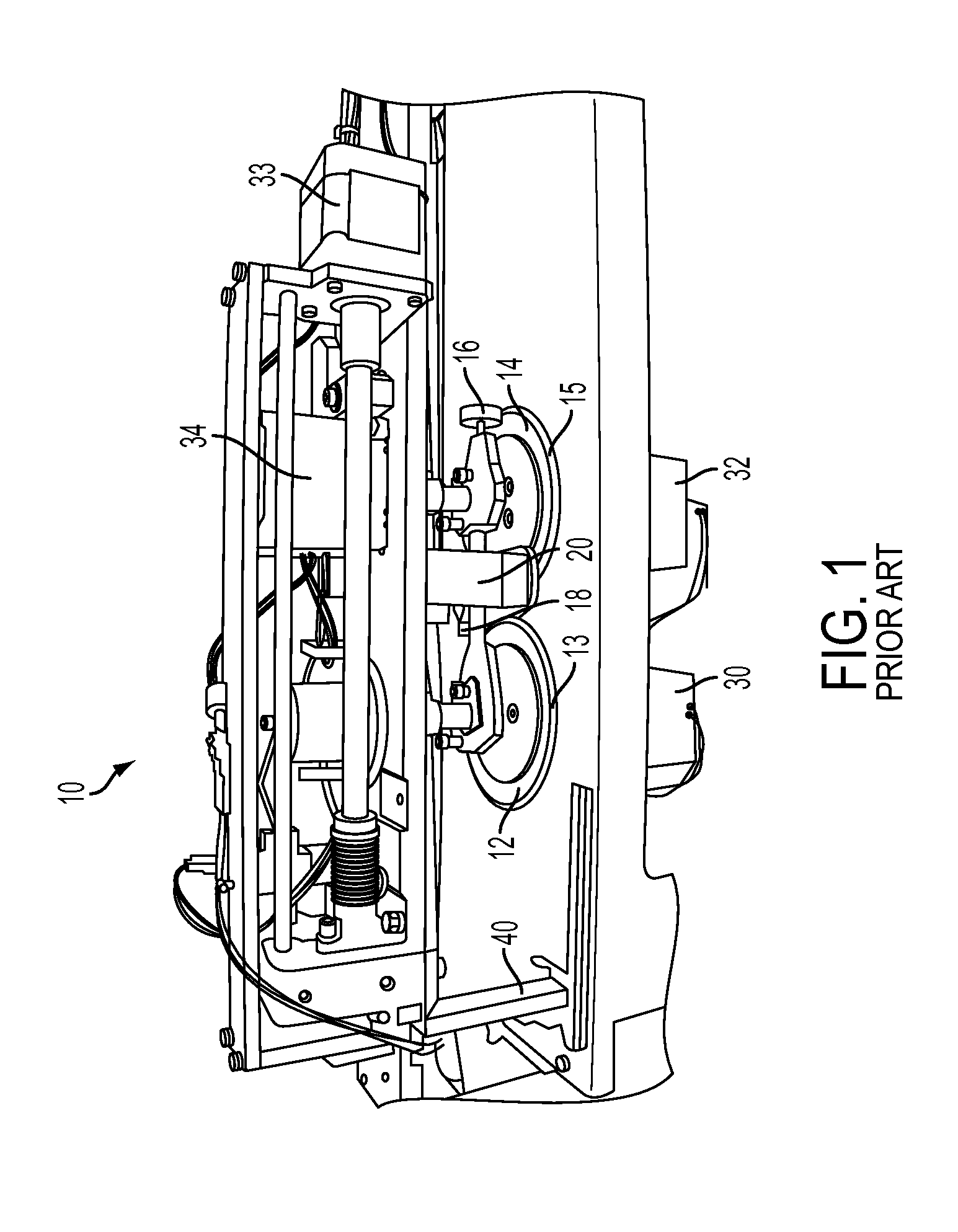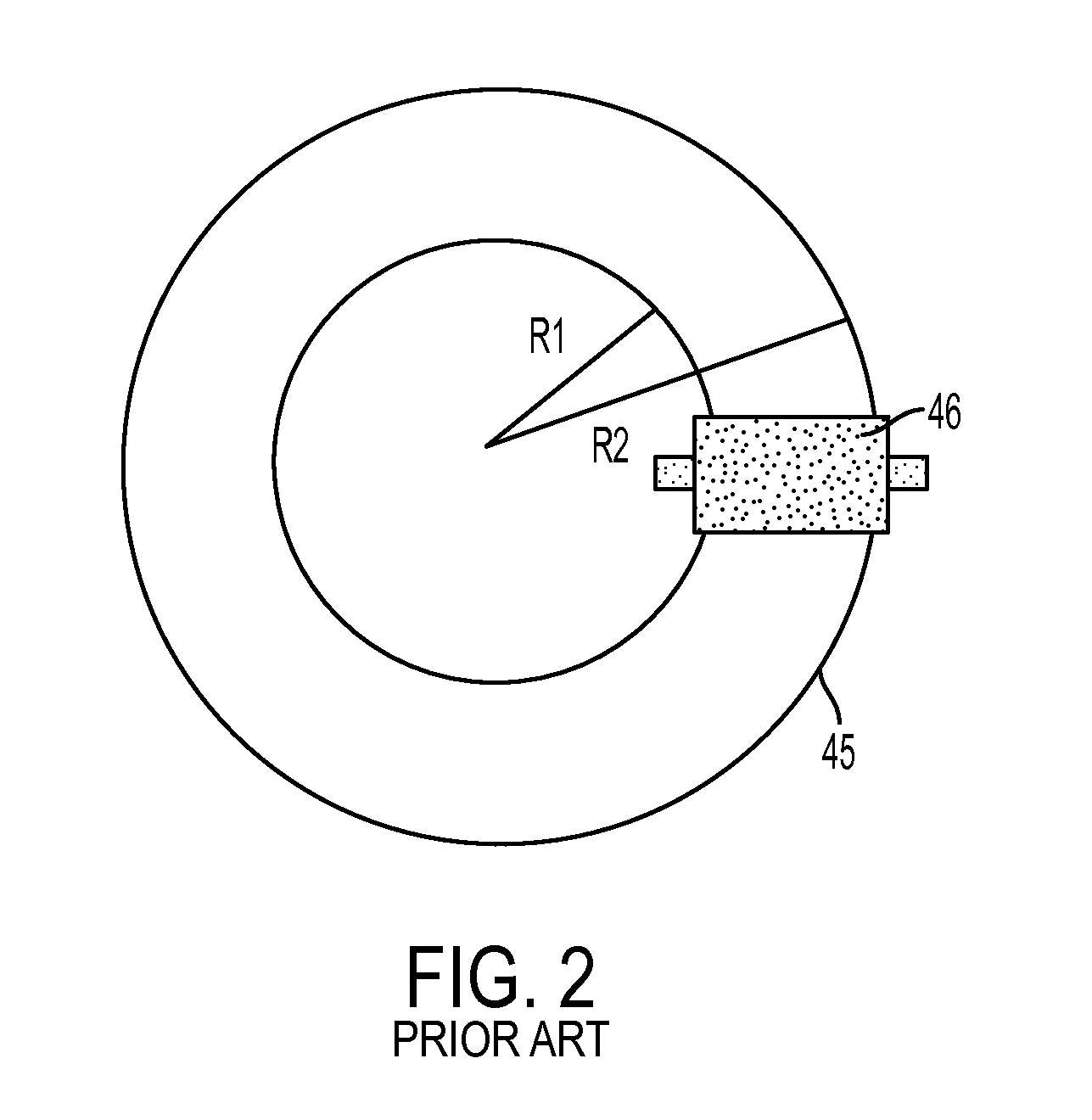Media rotation and translation mechanism
- Summary
- Abstract
- Description
- Claims
- Application Information
AI Technical Summary
Benefits of technology
Problems solved by technology
Method used
Image
Examples
Embodiment Construction
[0014]Turning now to the drawings wherein the showings are for the purpose of illustrating an exemplary embodiment and not intended as a limitation, FIG. 3 illustrates a partial perspective view of an improved sheet rotator / translator mechanism in accordance with the present disclosure for accomplishing the sheet rotation and translation in a finisher transport module system.
[0015]A number of existing finishing transport module systems employ a media rotation and translation mechanism that utilizes two disc / idler pairs for re-registering conveyed sheets from center to side registration. However, the nip width between the disc and idler is thin relative to the diameter of the disk to avoid slippage, and the resulting high nip pressure has caused marking on coated media. In accordance with the present disclosure, the one thin disc has been replaced with multiple concentric thin discs that distribute nip pressure and spin at different rotational velocities to produce the same linear ve...
PUM
 Login to View More
Login to View More Abstract
Description
Claims
Application Information
 Login to View More
Login to View More - R&D
- Intellectual Property
- Life Sciences
- Materials
- Tech Scout
- Unparalleled Data Quality
- Higher Quality Content
- 60% Fewer Hallucinations
Browse by: Latest US Patents, China's latest patents, Technical Efficacy Thesaurus, Application Domain, Technology Topic, Popular Technical Reports.
© 2025 PatSnap. All rights reserved.Legal|Privacy policy|Modern Slavery Act Transparency Statement|Sitemap|About US| Contact US: help@patsnap.com



